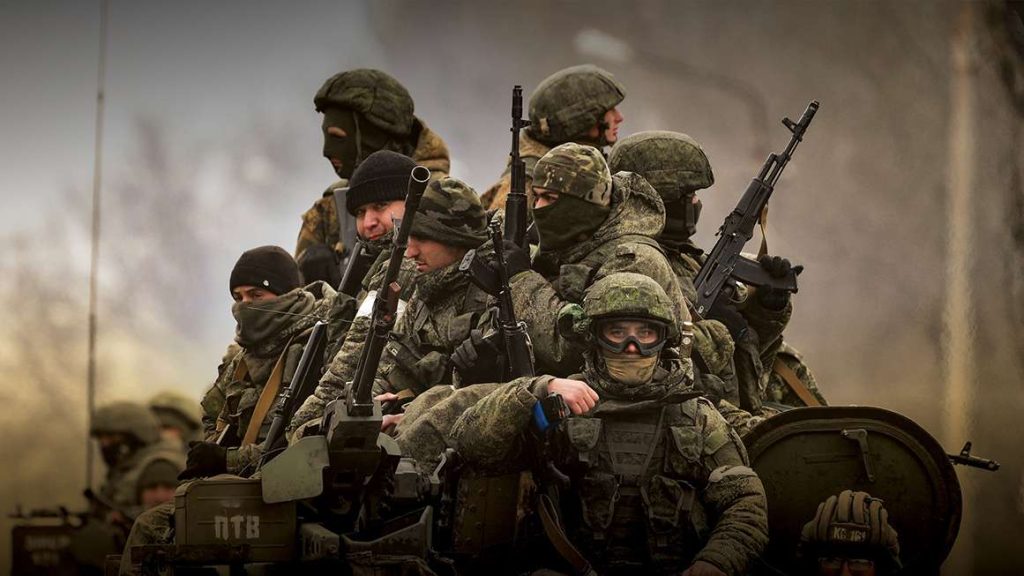Chernobyl Roulette: War in the Nuclear Disaster Zone, by Serhii Plokhy, W.W. Norton & Company, 240 pages, $29.99
The Chernobyl exclusion zone is the closest we have to a real-life postapocalyptic wasteland. After the infamous 1986 meltdown of a Soviet nuclear reactor, around 1,000 square miles in northern Ukraine were evacuated due to radioactive contamination. Video games such as S.T.A.L.K.E.R. and Call of Duty imagine the zone as a lawless wasteland, with bandits and spies fighting in Soviet-era ghost towns while dodging radiation patches.
In reality, Chernobyl is less abandoned than outsiders might imagine. The ill-fated nuclear reactor and the containment shell around it require ongoing maintenance. The area as a whole is monitored constantly for levels of contamination. A legion of Ukrainian workers regularly commutes into the exclusion zone from the nearby city of Slavutych, built after the meltdown for evacuated Chernobyl staff.
And in February 2022, there were soldiers. Chernobyl, sandwiched between Kyiv and the Belarusian border, was directly in the path of Russia’s invasion of Ukraine. For a little more than a month, Russian troops occupied the exclusion zone, where they found themselves prisoners of their own occupation. Although the Russians had all the firepower, they had to rely on the Ukrainian staff to protect them from radiological danger, which gave the Ukrainians leverage in the bizarre power struggle that went on there.
Chernobyl Roulette, by the Harvard historian Serhii Plokhy, is a good first draft of this history. Along with the wild chronology of events, Plokhy provides brief yet vivid sketches of the people involved, from the Russian commanders and Ukrainian caretakers to the infantrymen, janitors, tour guides, and squatters in the exclusion zone. Plokhy can be heavy-handed in pressing his belief that the international community abandoned Ukraine, but he is more fair-minded about the dilemmas between collaboration and resistance that Ukrainians faced.
Much of the story is told through the eyes of Valentyn Heiko, the Ukrainian foreman on duty when the invasion began. Heiko neither welcomed his new Russian overlords nor resisted them. Instead he treated the foreign soldiers as unexpected visitors to his plant. Heiko explained to Col. Andrei Frolenkov and Gen. Sergei Burakov that their troops would have to wear guest badges and follow safety instructions, just like any other delegation of outsiders. The officers had no choice but to comply, since they needed Heiko’s expertise to stay safe.
The staff often played on the soldiers’ fear and ignorance regarding radiation. In one instance, they loudly joked in front of a group of soldiers that everyone in the plant was “screwed” because they had run out of their nonexistent “anti-radiation pills.” Another time, when plant worker Serhii Dediukhin overheard a soldier fantasizing about shooting the staff, he asked out loud if the soldiers would prefer to go home in lead coffins. Even their dead bodies, the threat implied, would be a radioactive hazard.
This isn’t to say that the Russian army was powerless or that the Ukrainian staff had total control. Several times in March 2022, the power lines from Kyiv to Chernobyl were cut, which shut down the cooling system on the plant’s nuclear waste containment unit and threatened to cause a new meltdown. Russia offered to supply Chernobyl with electricity from Belarus, a close Russian ally, which would bring the plant under tighter Russian control. Heiko agreed, on the condition that Belarus supplied electricity to Slavutych as well.
For the first 26 days of the war, the siege of Slavutych also prevented the next shift of workers from coming to Chernobyl, forcing a single night-shift crew to work for nearly a month straight. When those workers started to break down mentally, management asked the Russian army to facilitate a shift change. Russian commanders were happy to oblige—both because they feared what would happen if the staff became unhinged and because it was an opportunity to flex their own muscles. Ukrainian workers then had to travel between Slavutych and Chernobyl through Belarus under armed Russian guard.
The army didn’t strictly have to follow the experts’ warnings. They could, and did, push their luck, to the horror of the Ukrainian staff. Russian officers had their troops dig trenches in the highly irradiated Red Forest, named for the mutated, strangely colored trees growing there. Senior engineer Valerii Semenov remembered following the troops around, “warning that you may run into something that will leave you an invalid,” to no avail. The soldiers even set up an open-air field kitchen in the Red Forest, cooking and eating in the cloud of contaminated dust they had kicked up.
At the time, Ukrainian propaganda claimed that hundreds of Russian troops were rushed to the hospital with radiation poisoning and that one died. (Independent experts say the level of radioactivity was not high enough to do that kind of short-term damage.) Plokhy does not address those rumors, but he reports that Heiko chewed out Russian Gen. Oleg Yakushin for exposing his men to permanent health risks. “You will probably reproach yourself to the end of your life,” Heiko told Yakushin. “Or not. I don’t know.”
Semenov, the engineer, divided the Russian army into two categories: two-thirds reasonable professionals who were there to do a job, one-third “obsessed” nationalists who really believed they were liberating Ukrainians from fascism. In a bizarre echo of American propaganda leading up to the Iraq War, Russian propaganda claimed Ukraine had been developing weapons of mass destruction from leftover nuclear materials in Chernobyl.
Russian forces began rummaging around for evidence of this Ukrainian weapons program, and Semenov recalled having to stop them from running an excavator through a mound of radioactive waste. Some of the troops also took the opportunity to fill their own pockets. “Those who had come with an exalted mission to free us,” Semenov said, “they freed us only of things,” including office supplies and tablet computers.
The soldiers and workers were not alone in the exclusion zone. A few hundred squatters live in the less irradiated areas; most of them are older residents who refused to abandon their hometown. Before the war, there was also a subculture of youth who snuck in to explore the exclusion zone. They were called “stalkers,” a term borrowed from Roadside Picnic, a 1972 Russian novel about scavengers in a wasteland left by alien visitors. (Andrei Tarkovsky adapted the book as the film Stalker in 1979, and the S.T.A.L.K.E.R. video game series reimagined Roadside Picnic in real-life Chernobyl.) More recently, the Ukrainian government started developing legal, guided tourism to capitalize on the popularity of the 2019 HBO miniseries Chernobyl.
In real life, as the invasion began, a group of four stalkers showed up at the gates of the Chernobyl plant, unsure what else to do. The Ukrainian security guards, who thought the young men with camera equipment and survival gear could be Russian spies, locked them in a basement. When the Russian army took the plant, the stalkers became the prisoners of the prisoners. They eventually proved their goodwill by running the plant cafeteria and keeping everyone well fed.
The Russian forces, for their part, were shocked to find anybody living in the exclusion zone. From Moscow’s perspective, it was supposed to be empty territory. “Where did you all come from?” hotel owner Oleksandr Skyrda remembered the soldiers asking before forcing him to the ground at gunpoint.
Unlike the plant staff, the squatters had little power over the soldiers’ safety, freeing the Russian army to act with brutality. “They broke into everything,” the elderly squatter Liudmyla Besedina told reporters. “They robbed. They carried everything out.” But it was unarmed resistance that drove the Russian army out of Slavutych. After Russian soldiers overwhelmed the paltry Ukrainian militia defending the city, thousands of people—including a priest waving a giant wooden crucifix—poured into the streets. Taken aback by the reaction, and probably afraid of what would happen if nuclear plant workers or their family members were killed, the Russian commander agreed to pull back from the city.
Hard power arrived on the heels of the nonviolent revolt. As the Ukrainian army advanced north from Kyiv, the Russian forces at Chernobyl began to pack their bags. Around noon on March 31, 2022, Yakushin’s men ordered the power plant management to sign a document praising the “reliable protection” of Chernobyl and stating that there were no complaints with Russian conduct. During the next few hours, the troops grabbed as much as they could before driving off. Shift leader Volodymyr Falshovnyk saw them struggling to fit a stolen room heater into a car.
It would be inaccurate to say guns did not matter during the struggle for Chernobyl. After all, it was part of a war, and the Russian army came and went with Russia’s broader battlefield fortunes. But guns were not the only type of power that mattered. For a few tense weeks, the Geiger counter was as mighty as the sword.
The post Inside the Russian Occupation of the Chernobyl Exclusion Zone appeared first on Reason.com.







